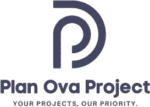Resource Allocation & Roles
At The Digital Bridge Hub, we believe that well-defined roles, clear responsibilities, and effective resource allocation are essential to ensuring project success. Our structured Resource Allocation Framework ensures that the right expertise is assigned to the right tasks, improving productivity, enhancing collaboration, and achieving project objectives on time and within budget.
Our resource management strategy focuses on:
- Allocating skilled professionals based on project complexity, scope, and deadlines.
- Ensuring optimal resource utilization to avoid delays and budget overruns.
- Implementing backup strategies to mitigate the impact of resource unavailability.
- Balancing workload distribution to maintain efficiency and project momentum.
Key Roles & Responsibilities
1. Project Manager
Role: The Project Manager (PM) oversees the entire project lifecycle, ensuring objectives are met, timelines are followed, and budgets are maintained.
Key Responsibilities:
- Develop detailed project plans, schedules, and budgets.
- Manage project resources, ensuring optimal workload distribution.
- Act as the primary point of contact for clients, ensuring clear communication.
- Identify potential risks and implement mitigation strategies.
- Monitor progress and ensure milestones are achieved.
- Manage change requests to prevent scope creep.
- Conduct regular status meetings, ensuring stakeholders are informed.
2. Business Analyst (BA)
Role:The Business Analyst (BA) bridges the gap between business goals and technical implementation. They gather requirements and ensure the solution aligns with business objectives.
Key Responsibilities:
- Conduct stakeholder interviews to gather functional and technical requirements.
- Document user stories, process flows, and detailed requirement specifications.
- Facilitate Fit-Gap Analysis to identify gaps between business needs and technical capabilities.
- Collaborate with developers, testers, and stakeholders to ensure requirements are correctly implemented.
- Validate that project outcomes align with client expectations.
3. Developers/Engineers
Role: The Developers/Engineers are responsible for the technical execution, coding, and integration of the solution.
Key Responsibilities:
- Develop scalable and efficient code that meets technical specifications.
- Implement APIs, third-party integrations, and customized business logic.
- Collaborate with the QA team to resolve bugs and enhance system performance.
- Maintain clear Code Documentation for future maintenance.
- Conduct peer code reviews to ensure quality and adherence to coding standards.
4. Quality Assurance (QA) Engineers
Role: Our QA Engineers ensure the solution is reliable, secure, and meets performance expectations by conducting comprehensive testing.
Key Responsibilities:
- Develop detailed Test Plans that define test cases and expected outcomes.
- Conduct Functional Testing, Regression Testing, and User Acceptance Testing (UAT) to identify defects.
- Work with developers to resolve issues and retest fixes.
- Ensure all project deliverables meet quality standards before deployment.
- Document all test results, including defect reports and resolutions.
5. Scrum Master (For Agile Projects)
Role: The Scrum Master facilitates Agile practices, ensures the team follows Scrum principles, and drives successful sprint completion.
Key Responsibilities:
- Conduct Sprint Planning to define deliverables for each sprint cycle.
- Facilitate Daily Stand-ups to track progress, identify blockers, and align teams.
- Organize Sprint Reviews to present deliverables and gather stakeholder feedback.
- Lead Sprint Retrospectives to identify areas for improvement.
- Remove obstacles that may hinder project progress.
6. Solution Architect
Role: The Solution Architect designs the overall system architecture, ensuring technical feasibility and scalability.
Key Responsibilities:
- Design system architecture, data flows, and integration points.
- Recommend suitable technologies, frameworks, and tools.
- Ensure the solution meets scalability, performance, and security standards.
- Collaborate with developers and stakeholders to refine architecture as needed.
7. UI/UX Designer
Role: The UI/UX Designer creates intuitive, user-friendly interfaces that enhance the customer experience.
Key Responsibilities:
- Design wireframes, prototypes, and user flows.
- Conduct User Research to understand client needs and improve usability.
- Collaborate with developers to implement designs effectively.
- Ensure the interface is responsive, visually appealing, and user-focused.
8. Change Manager
Role: The Change Manager oversees the change management process to ensure minimal disruption to business operations.
Key Responsibilities:
- Develop a structured Change Management Plan.
- Manage stakeholder expectations regarding new processes and system changes.
- Conduct training to support employees through transition phases.
- Monitor the adoption of new tools and processes, addressing resistance where needed.
Resource Allocation Strategy at The Digital Bridge Hub
To ensure optimal resource utilization and project success, we follow these key strategies:
- Resource Planning: We assess project requirements and allocate resources based on expertise, availability, and project complexity.
- Workload Balancing: We ensure workloads are evenly distributed to maintain efficiency without overburdening team members.
- Backup Planning: To mitigate the impact of unexpected staff unavailability, we maintain a pool of backup resources with relevant skills.
- Resource Tracking: Using tools like JIRA, Microsoft Project, and Trello, we monitor resource utilization to ensure optimal performance.
- Skill-Based Allocation: We assign resources based on their expertise in key technologies like SAP, Salesforce, AI, Cloud Solutions, and Web Development.
- Agile Resource Management: For Agile projects, we adapt resource allocation throughout each sprint, ensuring flexible team collaboration.
Why Our Resource Allocation Ensures Project Success
At The Digital Bridge Hub, our well-structured resource allocation framework ensures that the right skills are applied at the right time, maximizing project success. Our expert team works collaboratively with clients to ensure project timelines, budgets, and quality standards are consistently met.
Key Responsibilities:
- Ensures every project phase is supported by specialists with relevant expertise.
- Reduces delays by balancing workloads and optimizing resource usage.
- Ensures continuity with backup resources available for critical roles.
- Facilitates proactive communication by assigning clear responsibilities.
- Drives successful project outcomes through experienced and skilled professionals.
Partner with The Digital Bridge Hub to experience seamless resource allocation, optimized team performance, and successful project outcomes.
